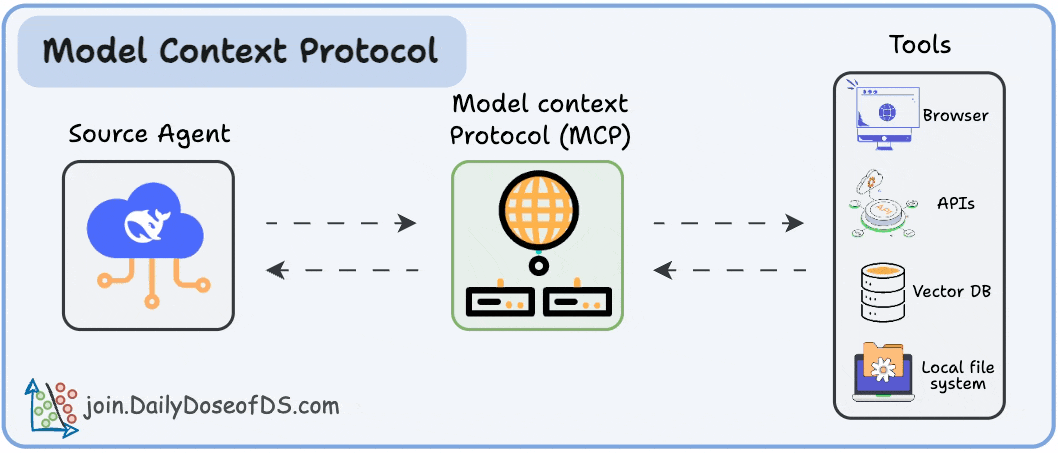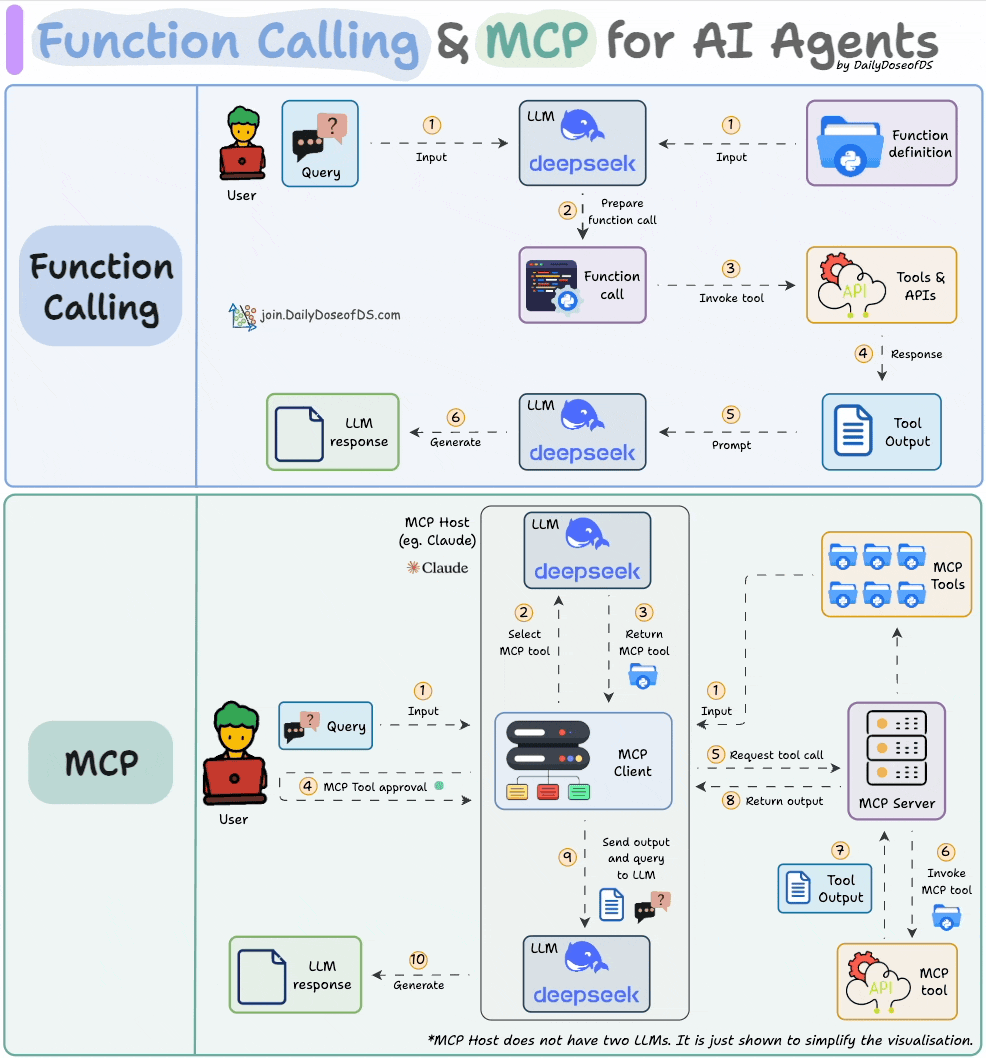MCP Integration with 4 Popular Agentic Frameworks
...covering Langgraph, CrewAI, LlamaIndex and PydanticAI.
Part 8 of the MCP crash course is now available, where we cover how to integrate MCPs with some of the most widely used agentic frameworks: LangGraph, LlamaIndex, CrewAI, and PydanticAI.
More specifically, it covers:
Some recent advancements in MCPs.
A clear and concise primer on each of the four frameworks.
Step-by-step practical walkthroughs for connecting MCP into each framework.
Each integration is accompanied by detailed implementations, ensuring you not only grasp the idea but can also perform integrations into your own stack.
Just like our past series on RAG and AI Agents, this series is both foundational and implementation-heavy, walking you through everything step-by-step.
Here’s what we have done so far:
In Part 1, we introduced:
Why context management matters in LLMs.
The limitations of prompting, chaining, and function calling.
The M×N problem in tool integrations..
And how MCP solves it through a structured Host–Client–Server model.
In Part 2, we went hands-on and covered:
The core capabilities in MCP (Tools, Resources, Prompts).
How JSON-RPC powers communication.
Transport mechanisms (Stdio, HTTP + SSE).
A complete, working MCP server with Claude and Cursor.
Comparison between function calling and MCPs.
In Part 3, we built a fully custom MCP client from scratch:
How to build a custom MCP client and not rely on prebuilt solutions like Cursor or Claude.
What the full MCP lifecycle looks like in action.
The true nature of MCP as a client-server architecture, as revealed through practical integration.
How MCP differs from traditional API and function calling, illustrated through hands-on implementations.
In Part 4, we built a full-fledged MCP workflow using tools, resources, and prompts.
What exactly are resources and prompts in MCP?
Implementing resources and prompts server-side.
How tools, resources, and prompts differ from each other.
Using resources and prompts inside the Claude Desktop.
A full-fledged real-world use case powered by coordination across tools, prompts, and resources.
In Part 5, we integrated Sampling into MCP workflows.
What is sampling, and why is it useful?
Sampling support in FastMCP
How does it work on the server side?
How to write a sampling handler on the client side?
Model preferences
Use cases for sampling
Error handling and some best practices
In Part 6 and Part 7, we covered testing, security, and sandboxing in MCP Workflows.
What is testing in MCP, and how does the MCP Inspector help?
Significance of security in MCP systems
The key vulnerabilities in MCP
Real-world threats like prompt injection, tool poisoning, server impersonation, and excessive capability exposure.
How to define and enforce boundaries using MCP roots.
Possible solutions to address the key threats
What is sandboxing, and why is it critical?
Fully containerizing a FastMCP server using Docker
How to enforce runtime limits and security boundaries with Docker flags?
How to connect Claude Desktop, Cursor, and custom clients to sandboxed containers?
MCP is already powering real-world agentic systems.
And in this crash course, you’ll learn exactly how to implement and extend it, from first principles to production use.
Read the first two parts here:
Thanks for reading!




